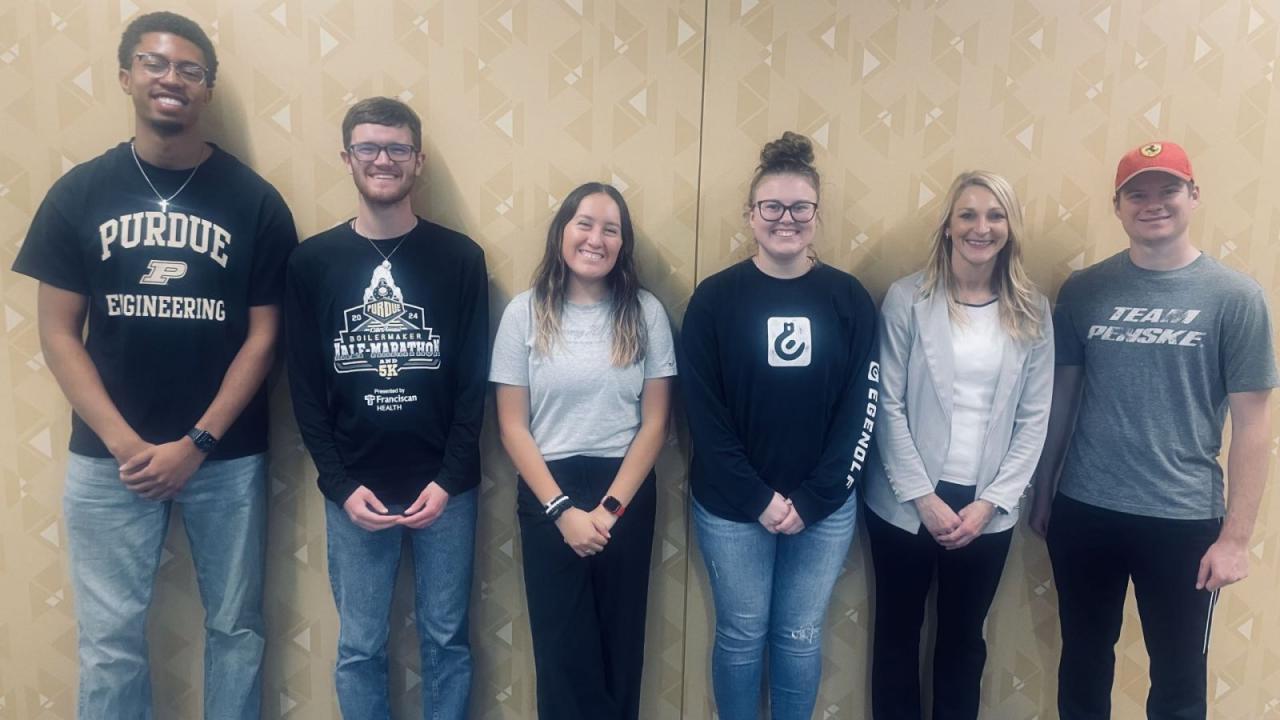Five engineering technology students are using a battery-powered toy as a platform to build a powered wheelchair for a child in the community.
The two-semester project is part of a capstone class taught by Brittany Newell, an associate professor in the School of Engineering Technology (SOET). Fisher-Price provided a toy car to Newell’s class, which was transformed into a usable wheelchair and delivered in mid-October to a local family with a child that needs mobility assistance.
Students were challenged to accomplish three goals with the capstone project:
- Do a traditional build for a child in need using a Fisher-Price car
- Design controls for a 360-degree car with features like parental controls, obstacle avoidance, and ergonomics that meet the varying needs of children in the community
- Create and include an instruction manual
GoBabyGo was started by Cole Galloway, a professor at the University of Delaware, to increase mobility and improve quality of life for children in their early developmental years. The program provides mobility devices in the form of ride-on cars at no cost to families in need, giving children a chance to have control over their own exploration and movement.
Since the program launched, new GoBabyGo chapters have formed in universities and service groups around the world. University chapters give students opportunities to practice their skills, apply knowledge, and meet a tangible need in the community.
The project has a personal connection for Newell, who has a friend with a child in need of a car. When she heard of GoBabyGo, she wanted to find a way to get involved and give back to the community in a way that involved students in experiential learning.
“Just as important as the product is, as a teacher, I saw how meaningful it would be for our students,” Newell said. “In SOET, we focus on hands-on learning, but often especially in early courses like those in the freshman year, we struggle to make real-world meaningful projects because students need depth before they can achieve complex designs.”
Newell plans to incorporate concepts learned from this initial GoBabyGo project into lower level courses. She hopes a more advanced sensor-based, 360-degree powered car can be used as a prototype for future deployment in her SOET Gateway to Engineering Technology course, typically offered to first-year students. The more advanced car will be part of a semester-long project that incorporates programming, electrical circuits, mechanics, ergonomics, mechanical design, manufacturing, design thinking, and human factors.
Newell says the GoBabyGo capstone project is an example of how the Polytechnic Institute mission plays out in the classroom, where an applied education rooted in research and innovation equips students to tackle real-world challenges and advance technology for the betterment of society.
“My hope is for the project to continue to grow. The needs of children in our community far surpass our ability to produce cars, but we can make a positive impact in a child's life one car at a time.”
Newell received initial funding for the project from Purdue, but she hopes for continued funding to run the project each semester in the capstone course. Newell has an undergraduate degree in biomedical engineering, which she says contributed to her interest in developing medical and mobility devices like powered wheelchair cars. Her past work includes electroactive polymers, a conveyor belt sensing system, industrial line health predictive monitoring, and more.
Additional information

